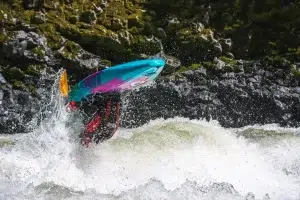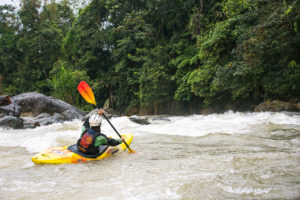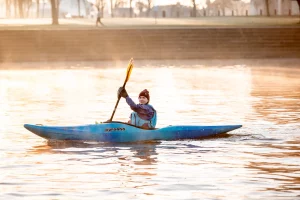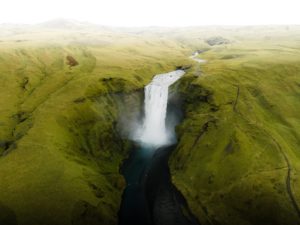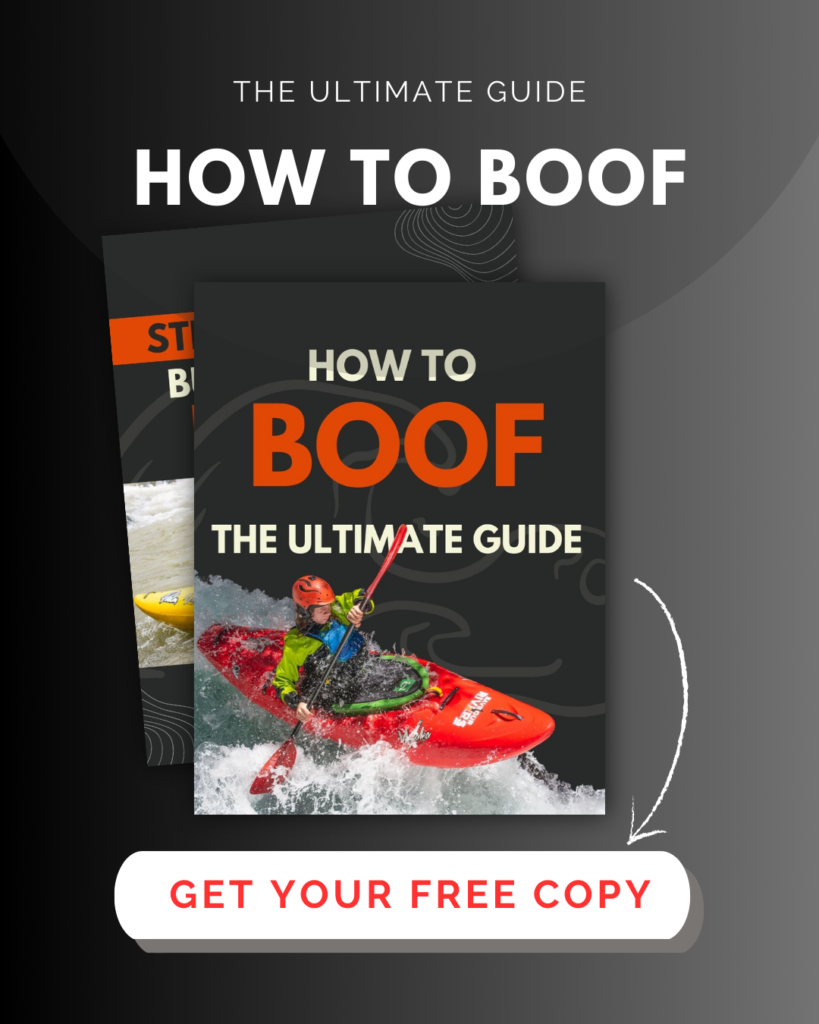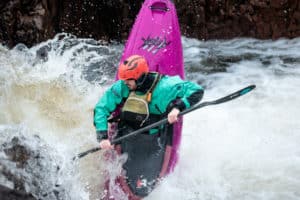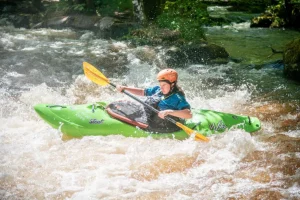Everyone has room to improve when it comes to whitewater kayaking. Even the professionals in the sport are looking at ways they can improve their skills. But for the average Joe, what are the best ways to improve your Whitewater Kayaking?
There are many ways to improve your whitewater kayaking skills, but there is nothing better than improving the basics. The best way to improve your kayaking and start shredding your local is to train on easier whitewater, where there are few consequences and you are most comfortable. No matter your level, we can all improve the fundamentals, so put aside that ego and bring it back to basics.
10 Whitewater Kayaking Tips to Level Up Your Kayaking.
1. Paddle Forwards…
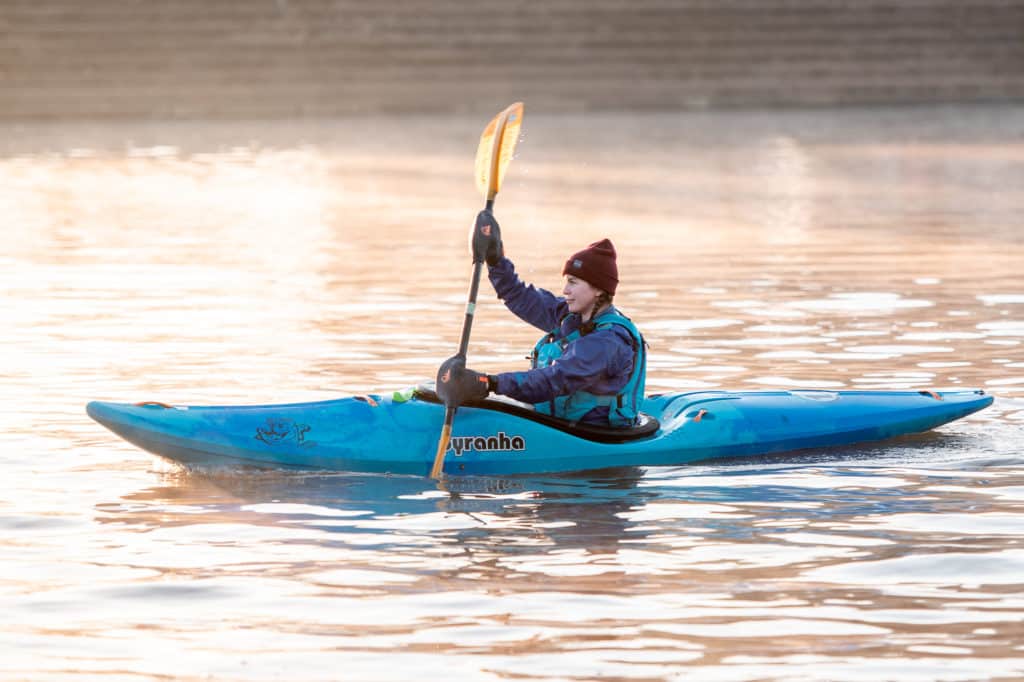
Paddler: Del Read. Photographer: Tom Clare
One of the best whitewater kayaking tips to improve your whitewater paddling is to work on your basic forward paddle. You may think:
“Pfft this is easy, I know how to paddle forwards, how will this help me?”
But if you break it down, the forward paddling stroke is the single most used element of whitewater kayaking. It helps you build up speed, determines your power and endurance, and allows you to time your paddle stroke to get the best out of your boat. Despite this, it is often neglected.
One of the biggest mistakes that beginners make, is to paddle with just their arms. When you are paddling you should be using your whole body to drive the paddle through the water for more powerful strokes and to increase endurance. You should be engaging your core by reaching your paddle forward to your toes, driving through the legs and hips to rotate your trunk, and only then following through with your upper body by engaging your back.
If you want to learn to forward paddle, look at the technique of the marathon paddlers, they may only be paddling on flat water, but they have some of the best forwards stroke techniques around. A great simple breakdown of the forward stroke can be seen here.
2. Paddle Less…
This one may be a counter-intuitive whitewater kayaking tip, but stay with us. Although you do want to focus on your forward paddling, in order to level up your kayaking, you should also be making sure to use your boat to your advantage to negotiate the river. One of the best ways to improve your paddling can actually be to stop paddling as much and instead focus on the timing and placement of your strokes.
If you watch a video of a beginner or even intermediate kayaker you will see them paddling forwards constantly. Often, fighting against the current in order to get the boat to react in the way they want to. Now watch a professional kayaker like Dane Jackson or Aniol Serrasolses. You will notice they actually take fewer strokes on the river and instead use the water to their advantage. This is how you become a better and more stylish paddler, as the fewer strokes you take the easier you make the rapid look.
The best way to practice this is to find an easy section of whitewater, ideally, one you can repeat and try to take as few strokes as possible to successfully navigate the rapid. Compete against yourself or your friends to see who can do the least amount of strokes in each rapid. You will soon learn which strokes are important and which are wasted energy, and through this learn how to use the water to your advantage.
3. Relax…
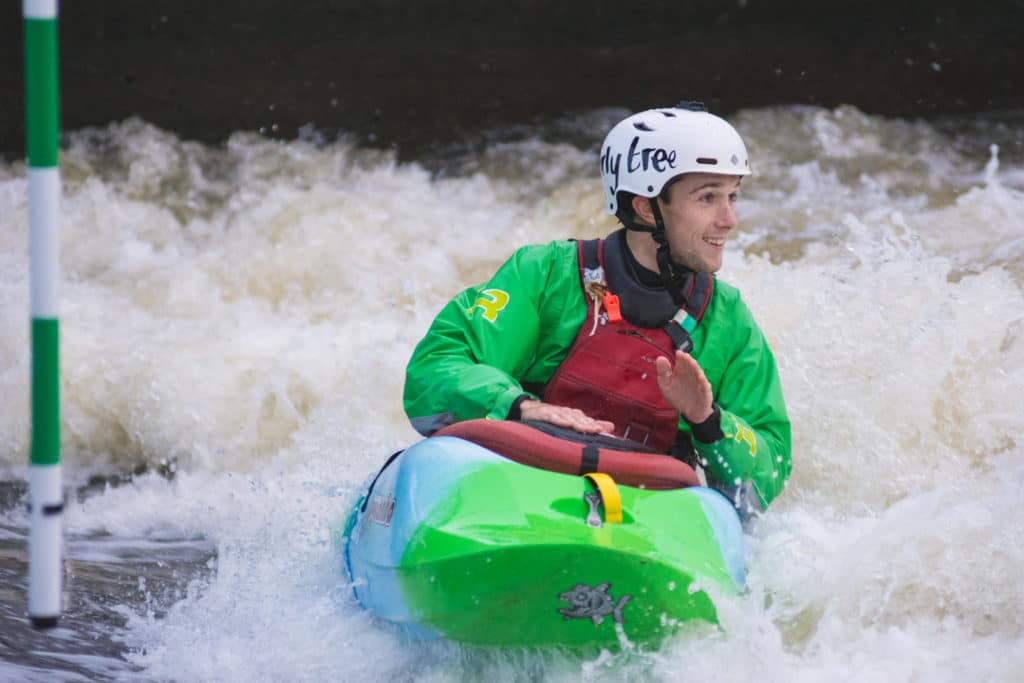
This tip is easier said than done. However, one of the best ways to improve is to keep yourself relaxed on the river. By keeping yourself loose you will much better be able to react to the rapids and the moving water under your boat. If you stay too rigid you are more likely to be capsized by the turbulent water.
One mistake people make, especially when starting, is to grip the paddle shaft too tightly. This is often down to being nervous and can be difficult to avoid, but it keeps the rest of your body tight and prevents you from paddling as effectively. This can also lead to tiring out much faster than you would otherwise.
One thing you can think about on the river is paddling with piano fingers. This small exercise will have you consciously thinking about your grip and force yourself to relax your hand in the process. To do this, on each stroke, with your top hand, wiggle your fingers as if you are playing an imaginary miniature piano. It may sound silly, but it’s a great and fun way to think about relaxing your grip.
4. Learn the Low Brace…
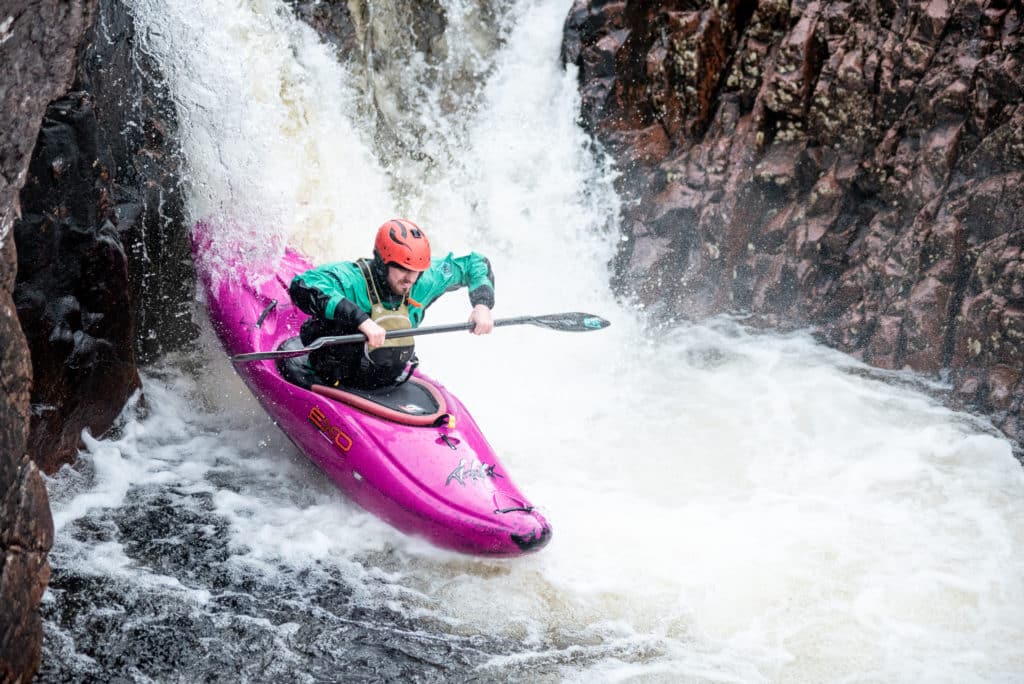
The low brace is another basic stroke that is often overlooked, and so makes it into our top whitewater kayaking tips. The low brace is a great way of preventing yourself from flipping on the river. The low brace is also better for you than a high brace, which is much more common to see on the river. This is because the high brace can put your shoulders into a position that makes them more vulnerable to injury. The Low brace will stop you from going upside down while keeping your shoulders safe and allow you to recover faster and continue paddling down the rapid.
The low brace can be easily practised on the flat by rocking the boat over to its tipping point and then using the reverse of the paddle blade to push yourself back upright. Challenge yourself to see how far you can go and still right yourself – Try to get the water to lap over your deck. Make sure you practice on both sides.
5. Start easy…
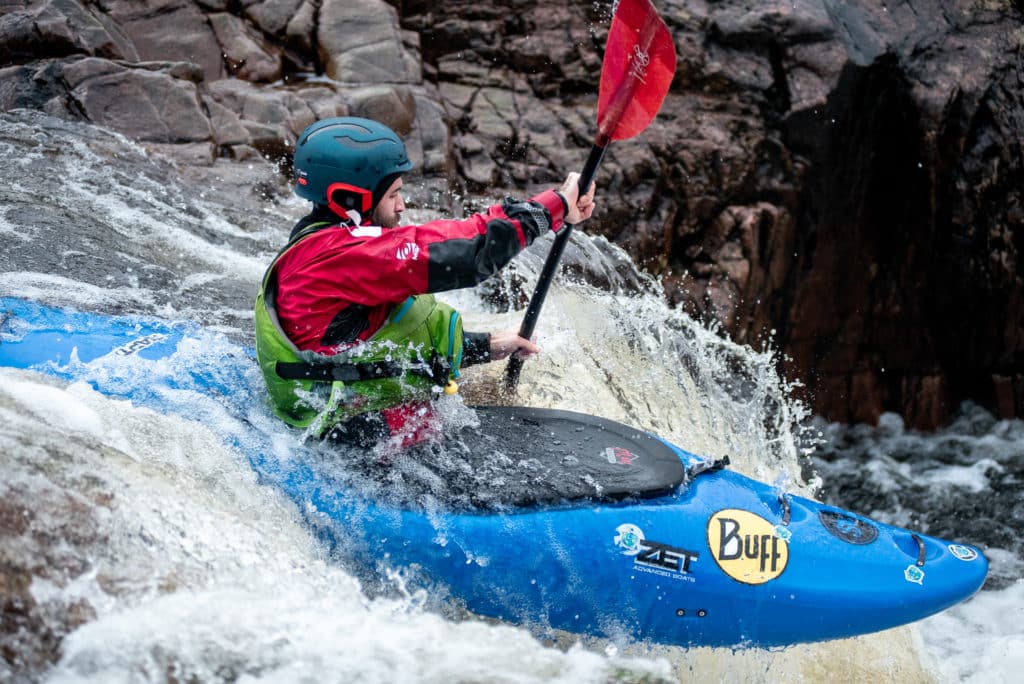
No matter your skill level it is always important to take a step back and practice on sections that you are comfortable with. You don’t always want to be pushing your limits or ‘sending the gnar’. One of the best ways to improve is to play on easier sections of whitewater. This will depend on your level and it may be flatwater or grade 1 if you are just beginning, or grade 4 if you are more experienced. Take some time to practice on sections that you could paddle blindfolded.
This is important as it allows you to try new skills and moves on sections that you are comfortable with. Try that splat, go for new lines or bring a freestyle boat and try that trick. This will allow you to improve at a much faster rate than if you are survival paddling on every trip, completely rigid, and swimming in every rapid. You will learn to enjoy kayaking much more if you are having fun and comfortable. Get some mates and have a day of challenging each other to new tricks, each set challenges and find some goals to work towards. If you find a section of the river boring then you’re not playing hard enough. There are always new moves and lines to try and failing this, jump in a new boat and try that instead.
6. Get in a playboat…
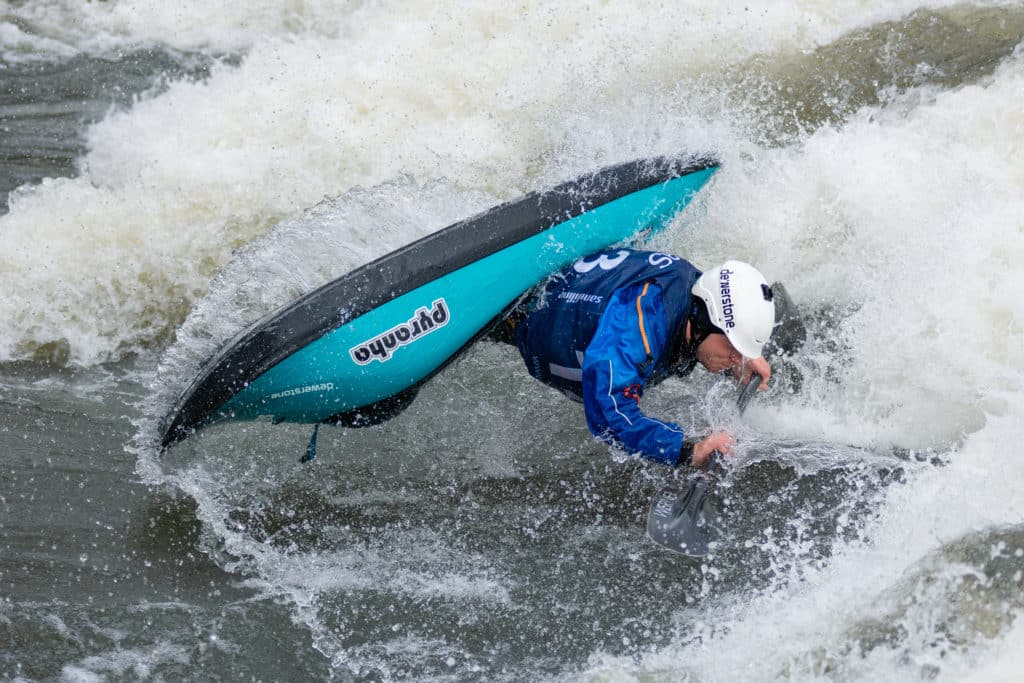
Paddler: Bren Orton – Photographer: Jack Grace
This one is linked to the previous point. Getting in a playboat and trying to throw some freestyle, or practising tricks if you can already throw down is a great way to improve your kayaking. Spending time in holes and constantly finding yourself upside down is great for your spatial awareness and rolling skills.
By intentionally throwing yourself into holes you quickly learn that edging is super important and you will soon adapt to the water in order to be able to move around and set up for tricks. The key is to keep the upstream edge up at all times.
As you try new tricks and skills, you will often find yourself upside down, and that means lots of rolling practice. This is great as it forces you to roll without setting up and in all kinds of funky positions. You may have to roll up on your off side too if you are in a hole. This forced time underwater will make you much more comfortable when you flip on a harder river and you will be able to head to the river with newfound confidence.
7. Get uncomfortable…
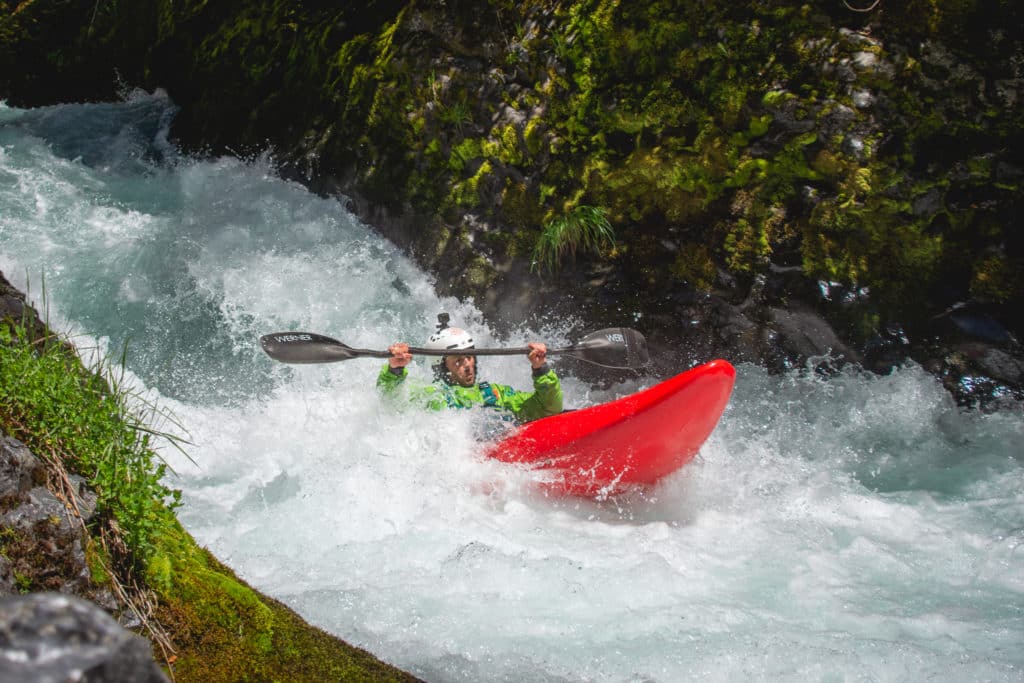
There are two aspects to getting uncomfortable in your kayaking. The first counteracts the whitewater kayaking tip above. You should spend some time pushing the limits of your ability. However, you should only be doing this in a safe way and only paddle within your ability and the ability of your crew. So no sending waterfalls if you haven’t mastered the ferry glide yet… You know who you are…
By pushing your limits you are able to push yourself and your skills and find the limits of your abilities. This should only happen on occasion and if you are following the other tips you will soon see a fast progression. But we want to reiterate, that this does not mean you should just throw yourself something down hard when you’re not ready for it. Go with someone who is more experienced than you and listen to their advice. Take it slow, but start getting comfortable being uncomfortable. If you want to learn some harder tricks, check out our instructional articles (and Newsletter!)
The second aspect of this is where you are in a controlled environment. Get yourself uncomfortable by trying that thing you always put off. If you can only roll on one side, then start rolling on the other. If you are nervous about surfing holes then start forcing yourself to surf in a safe environment. Even try throwing the paddle away and hand-paddle a river or bring a slicey boat to the section that you’re now comfortable in a creek boat. There are many ways to get uncomfortable and only you will know what they are. But start trying those things you have been putting off and you will see major improvements in both your skills and your confidence.
8. Stop following people
One of the most important skills of a kayaker and a skill that separates beginners from pros is the ability to read the water. This means you understand how the flow of the water reacts with the riverbed to form features in a river and you can pick the best lines from the bank or from your boat. The ability to do this will improve your kayaking tenfold as you will be able to navigate the river much more effectively and find safe and smooth lines on the go.
One of the best ways to do this is to stop following people when you are running a river. This can be nerve-racking at first, as whilst you are a beginner you generally stick to the tail of a more experienced kayaker. If you haven’t learnt how to read whitewater then the river can become very intimidating and you won’t be able to pick out what lines are clean and which aren’t. To combat this, take it slow and ease into not following people. Take time on the bank to listen to beta and ask people to explain the reasons for lines and to point out the obstacles and the hazards so you start forming an understanding of why certain lines are chosen over others.
The next step is to drop back from following the person in front – just by a few feet. By doing this you will put some space between yourself and the person guiding you and allow you to spot the features, rather than just following blindly. Try to identify lines yourself and use the person in front as a rough guide.
Once you feel comfortable doing that, start trying to read and run a river by yourself. Ask the person guiding you if you can try leading and then you can identify the lines yourself. If anything happens or if you start going somewhere bad, the more experienced paddlers can always nudge you in the right direction. By taking the time to learn to read a river you will drastically improve your kayaking and your reliance on other boaters.
9. Work on your roll
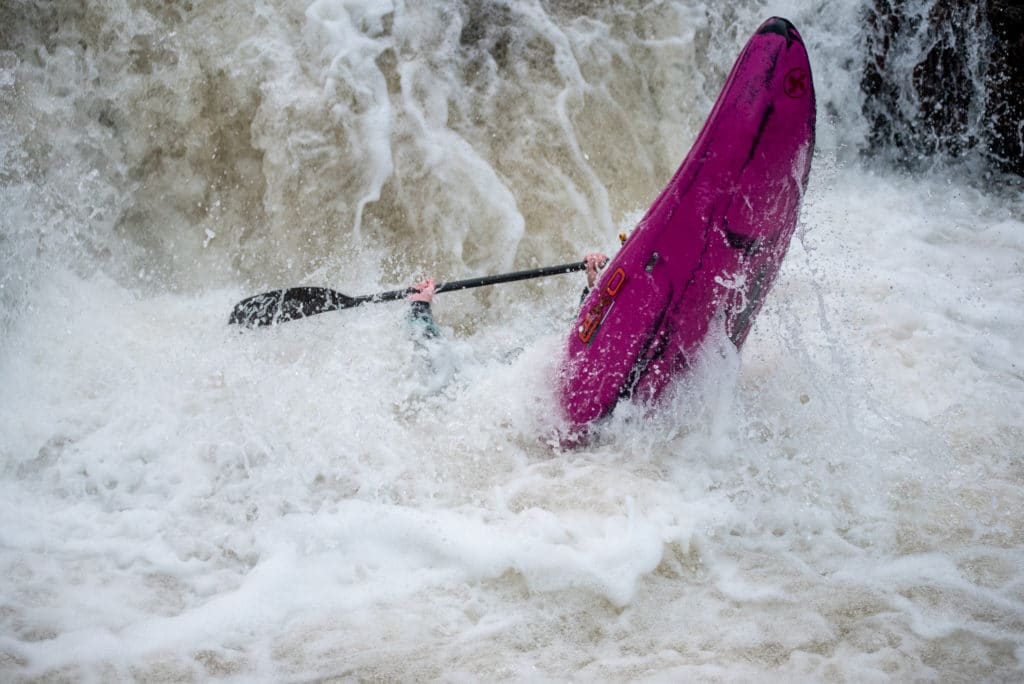
This one is obvious, but by no means less important. Work on your roll. Roll every opportunity you get! The more comfortable you are rolling, the more bombproof it will become. When you are comfortable rolling then you will be less afraid of a river or a rapid, as you know that if/when you flip then you can just roll back up and continue down the river.
The ability to roll consistently will reduce the numbers of swims you take and make you more enthusiastic to paddle. Everyone swims and there is no shame in that, but having more time in your boat is so much more fun, safer, and allows you to improve much faster. By drilling your roll in as many places and situations, as you can think of you, will build up muscle memory and before long it will become second nature.
10. Get some coaching
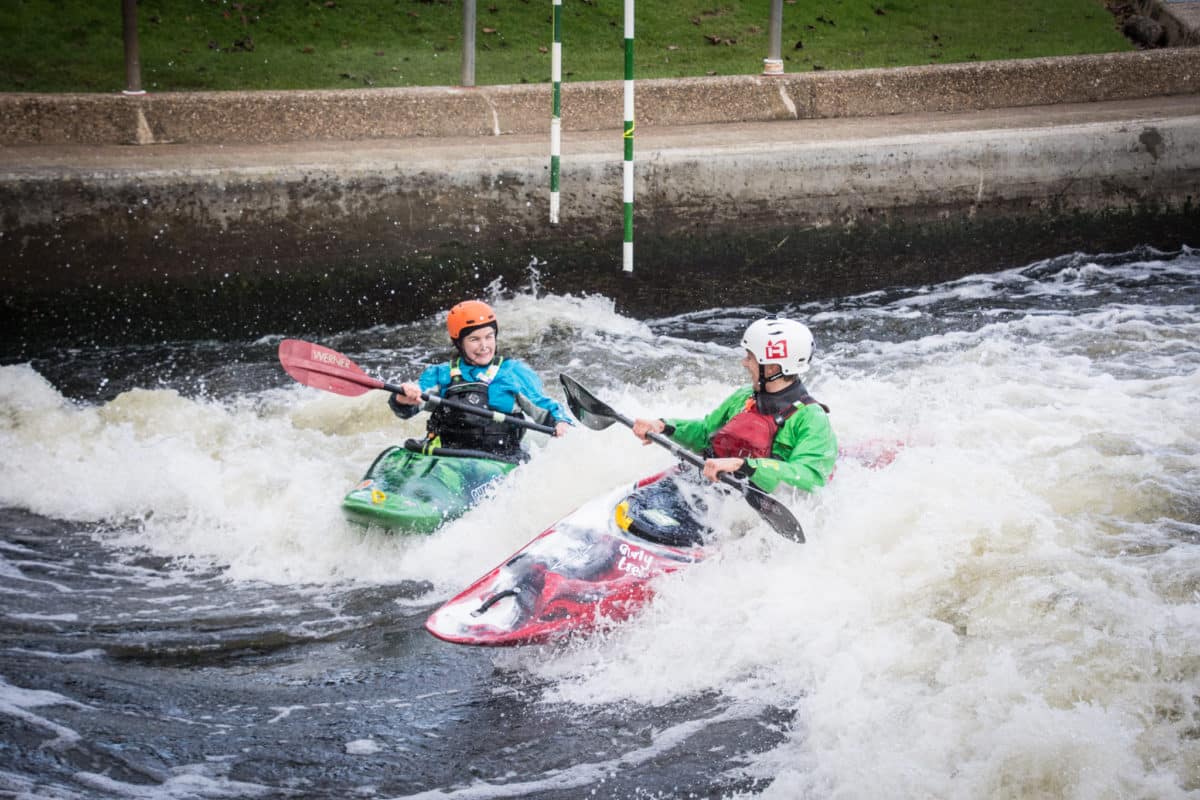
Paddler: Del Read – Coach: Matt Brook – Photographer: Jack Grace
If you really want to improve then it can be a great investment to get some coaching. If it is a possibility for you, you can pay a professional to identify areas to work on and set some really strong foundations for your paddling. A professional coach will be able to identify things that most people would miss and help you find ways to practice and improve your techniques. Failing that, you can spend some time with a more experienced paddling friend to work on some skills and to offer some coaching tips (maybe buy them a beer or two).
It is often difficult to identify where you are going wrong when you are starting out or even if you are more experienced. We are all learning and getting some coaching can be a great way of turbo-boosting our paddling to the next level. You may learn in a few sessions what would have taken you years without it.
Bonus Tip! Invest in Gear
Investing in a good set of gear, at least the basics, will be great for your paddling career. Whilst you’re testing the water, so to speak, and seeing whether you like the sport, then borrowing gear is ideal. However, as you progress with the sport you will find that a good set of gear will only benefit your paddling.
A good cag or drysuit will keep you warm and dry and a good spraydeck will remove that pool of water you’ve been sitting in and reduce the number of accidental swims you take. A helmet should also be on the list as there is nothing more that you need to protect than your head. However tempting, avoid purchasing a kayak and paddle until you know what you want and what boat suits your style and instead put that money into gear that will keep you in the sport for longer.
